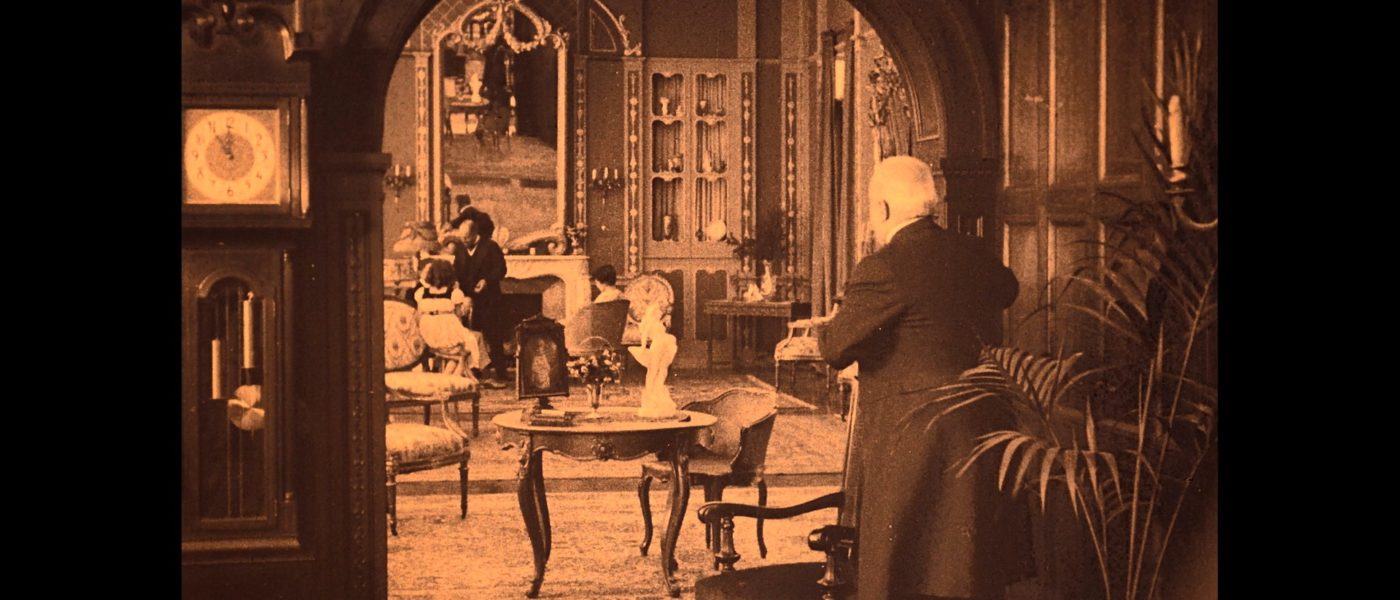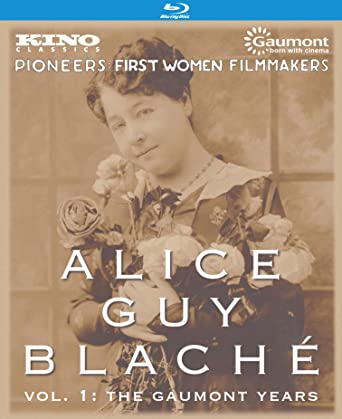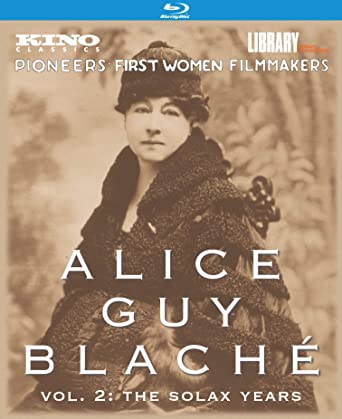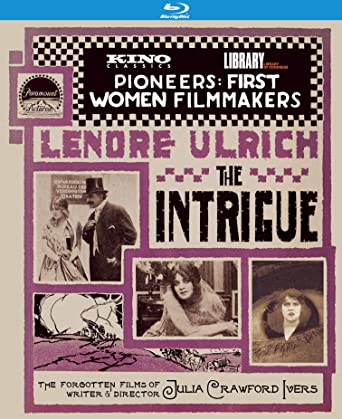Three Stand-Alone Blu-ray Collections Celebrate the Earliest Offerings of Female Filmmakers.
DIRECTED BY: Various, including Alice Guy Blaché, Julia Crawford Ivers, and William Desmond Taylor
STREET DATE: March 17, 2020/KINO-LORBER
Kino has released three new discs in their Pioneers: First Women Filmmakers series. The discs comprise a delicious and important salad-and-meat course for those who want to understand filmmaking, early or modern.
The first two discs cover examples by Alice Guy Blaché. On Volume 1, her years at Guamont are covered; on Volume 2, her films at Solax are examined.
My personal prejudices made this a more challenging couple of discs to review. Blaché’s work that is examined here occurred prior to my wheelhouse of appreciation; I am continually telling folks that I collect silent film from 1915-1929. That cinematic language is one which I usually understand and relate to. In some ways, my reviewing this material is akin to asking a modern lit reviewer to be versed in Shakespeare. On one hand, one expects a literature reviewer to at least have a passing knowledge of Shakespeare, but on the other: well, practicalities tell us that specialization is such that it becomes difficult to know something about everything.
Having acknowledged that, I want to talk about some of the films and a handful of my favorite moments alongside how these films helped me build my own understanding of pre-1915 film dialect.
First, these films come from the day and age when film intertitles functioned as chapter/section titles. The title cards told you what you were about to see; they eliminated spoilers and were not plot-driving devices. This dialect takes getting used to, in my experience. It is not a wrong way of doing silent film or plot disclosure; it’s simply a device which has fallen out of favor for a much more dramatic-revelatory scheme which has persisted until the present day.
Second, these films are a product of their time. Still, Midwife to the Upper Class (1901) was not any more enjoyable even knowing this. The premise is interesting to modern eyes: children don’t come from women. No, they don’t even come from a stork. Instead, a midwife helps a couple select their child out of a cabbage patch. (Suddenly, The Cabbage Patch Kids makes a tiny bit more sense to me—but not that much more sense.) This is all well and good until, for laughs, the midwife pulls out a black baby to show the upper-class woman—who recoils at this suggestion.
Third, these films show a version of life that is likely unfamiliar to many of us. Madame Has Her Cravings (1906) features a pregnant woman who takes a child’s lollipop from a child because she craves it. This is followed by absinthe (people were significantly less concerned about fetal alcohol syndrome back then), herring, smoking a peddler’s pipe…and for all of this, we end up back in the cabbage patch.
Fourth, we see projected onto a screen the comedy which results from fears of the era. Remember that women’s suffrage was on the minds of many at the time and a wonderful take on sexuality and sexual roles is the very entertaining film The Results of Feminism (also 1906). Women presume upon men and hang out in bars instead of helping with children at home, men have headaches and are less interested in sex, they faint, and do domestic work. It’s an interesting film to compare to Hal Roach’s film from 20 years later called What’s the World Coming To?, known sometimes as A Furious Future (1926).
Fifth, the movies were experimenting with sound synchronization almost from the word ‘go,’ and Blaché participated in making some of these films, called photoscènes. In those days, the music would be pre-recorded onto a cylinder and played back as the film was projected—think of this in terms of a music video rather than a synchronous sound presentation one would find later in The Jazz Singer (1927). A sample of these films is included here on Volume 1.
Sixth, films like Parson Sue (1911) [located on Volume 2] explore themes which we consider commonplace but with some gender reversal. The parson is, as the title indicates, a woman. This creates some interesting interplay in the action and while the last third or so of the film is missing and though the parts that survive suffer from some decomposition on the sole surviving source print, it’s a delightful film nonetheless.
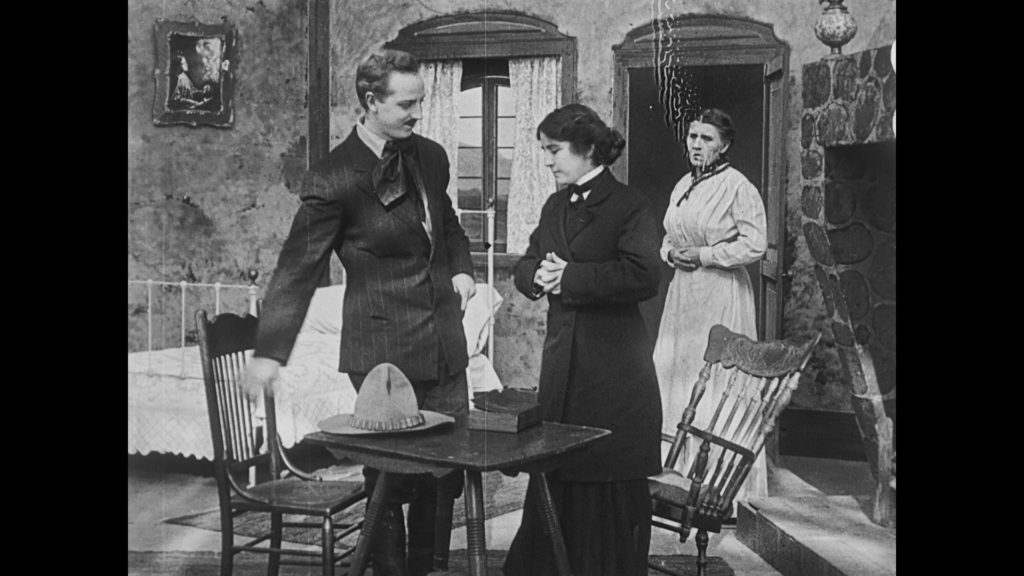
Which brings me around to my initial comment on intertitles and pacing. Despite the title cards taking away any surprise as to what is going to happen in the scene about to be portrayed for the audience, I found the film The Sewer (1912) to be quite interesting, complete with the hero trying to find his way through a sewer (again, as the title indicates).
The music tracks which have been created for these two discs are by a variety of musicians and do not detract from the film itself. Some are more to my taste than others, but none needed to be muted for me to enjoy the film. All of them were well-executed and played off their visual source material well.
The third disc in this collection is devoted to work done by filmmaker Julia Crawford Ivers and includes The Intrigue, the fourth reel of Ivers’ The Majesty of the Law, A Son of Erin, and Ben Blair (the last of which was directed by William Desmond Taylor.
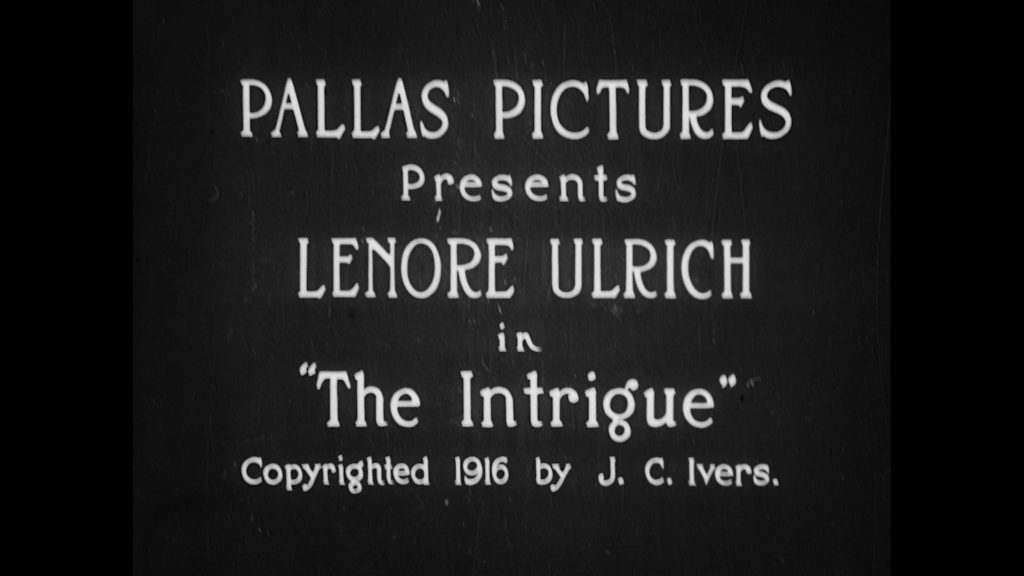
The Intrigue (1916) clocks in at just over an hour as a story which Ivers wrote about a weapon of mass destruction being produced for use in war. It is presented with a wonderful score by Ben Model. I enjoyed Model’s score for its transparency; I noticed it because I set out to, not because it gets in the way of the action. The commentary track is by film historian Anthony Slide. This commentary suffers from some degree of self-importance and condescension that unfortunately plagued his commentary on the most recent Kino release of Blood & Sand. Though his research seems sound, his tone is frightful and he spends a great deal of time harping on the unfortunate demise of any animals (he’s a member of PETA, according to the Blood & Sand track). The film itself is a bit title-card heavy but the storyline is interesting. The picture quality is good, though some scenes suffer from the source print having vibrated their way through the duping process, causing things to seem out of focus. There seem to be at least two source prints which have been combined for this presentation but nothing to this effect has been mentioned in the commentary or the essay included in the book.
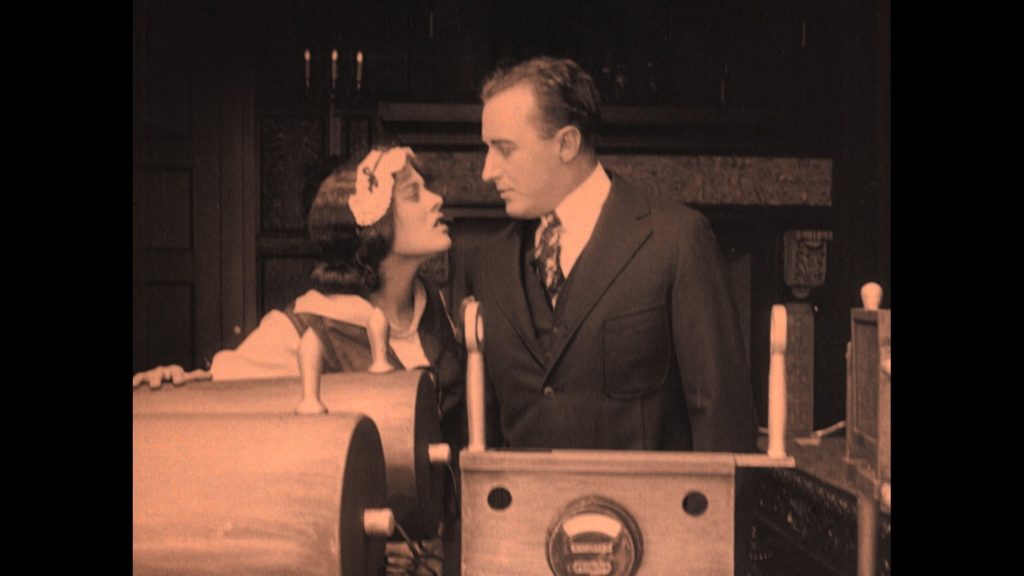
The Majesty of the Law (1915), directed by Ivers, is presented without a summary of the story up until that point so it’s difficult to find relevance in some of what is portrayed onscreen. I wasn’t sure there’d be enough here to evaluate, but despite some severe decomposition, the scene in the bank is very well played and more introspective moments are punctuated with close-ups instead of medium or long-shots. The score by Makia Matsumura is appropriately reflective of the action on-screen and was delightful to hear.

Ben Blair (1916) is another story by Ivers. It was directed by William Desmond Taylor who is far more well-known for his death than his films. Andrew Earle Simpson’s score is, like Model’s transparent in the sense that it does not cloud the action or compete with the images onscreen in any way. The characters are relatable, especially the boy for whom the film is named. His portrayal in the first twenty-ish minutes was touching and hit all the right notes to my mind of what a boy would do and feel in the situations in which he found himself. I must admit that I find the ending hard to swallow and even harder to swallow that a woman penned it willingly. I will not ruin it here since right now the cry of SPOILERS rings out like all of life is an episode of Dr. Who, but perhaps the best excuse is Ivers knew what would sell. Either way, Taylor’s direction is not as pedestrian as Anthony Slide is on record as insisting, so it’s definitely worth watching.
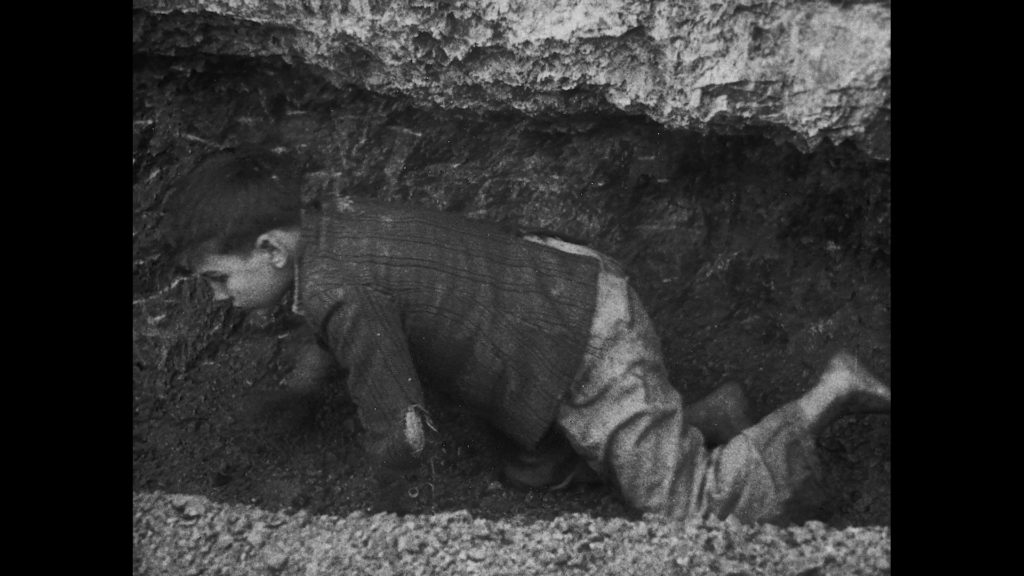
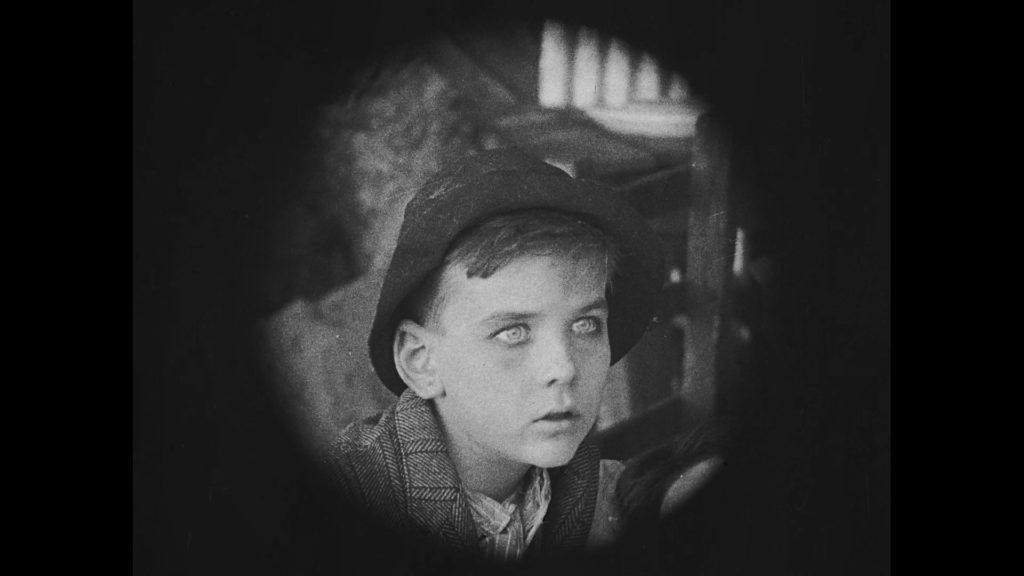
Finally, we have A Son of Erin (1916), which is written and directed by Ivers. The score by Eunice Martins is very modern but fitting to the action on the screen. The story comes packed with plenty of conflict and is an enjoyable film, complete with a lusting landlord, good old-fashioned graft, and a naïve daughter of a political boss. The sets are really well done as well; the wood paneling in the police station office seems to be real instead of painted and the cottage is roomier than I would expect a cottage to be but it is well-dressed. One of the reels is missing but the missing storyline is filled in with explanatory titles, so the film is easy to follow. Unfortunately, there is some sexual violence in the latter third of the film, so if that sort of thing bothers you, chew carefully. Partial spoiler: Miss O’Grady hits the guy over the head and he flees…so that is a relief.
A final word: the acting in these films is sometimes a bit more “broad.” This was a new medium and folks were still trying to figure out what playing to the crowd meant for film. However, there are decidedly wonderful creative gems here and it is worth a third and a fourth viewing in order to fully appreciate the dialect that’s being spoken onscreen here. These films most certainly have some important things to say to us 120ish years later.


